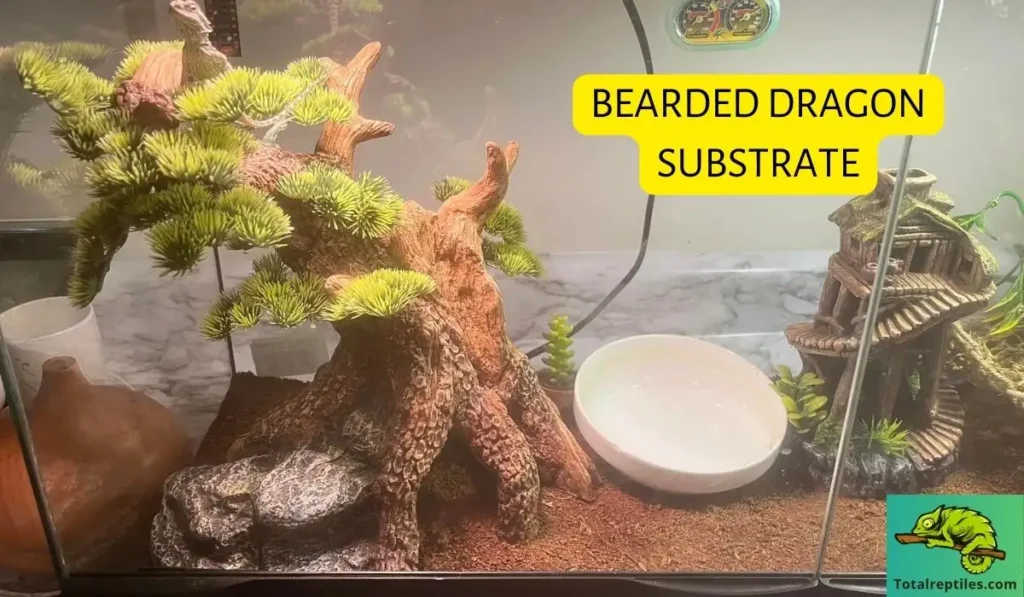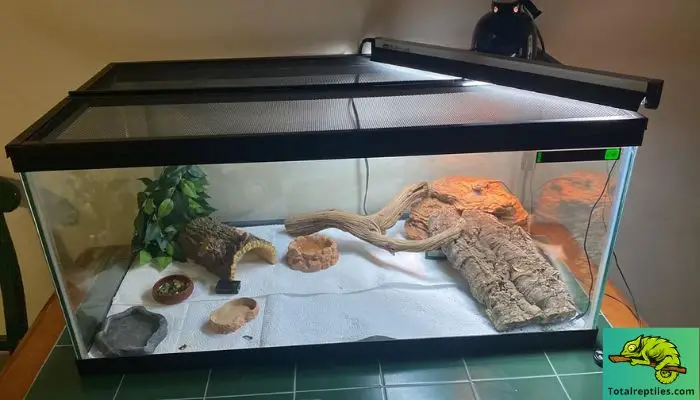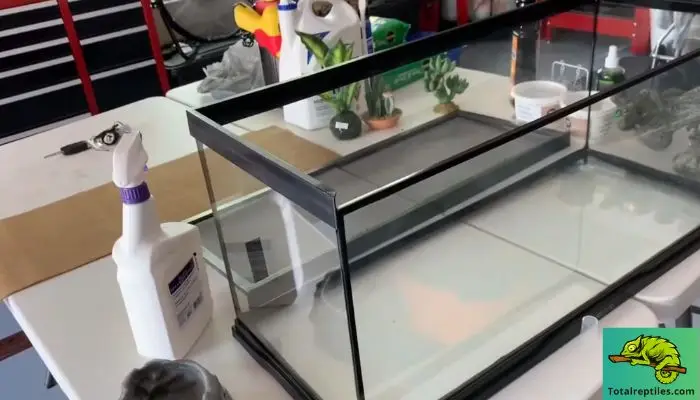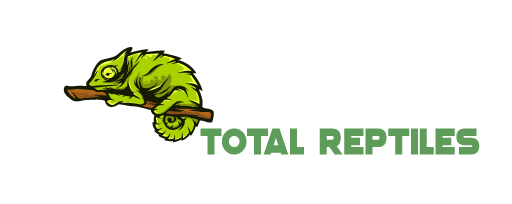The pet stores will offer you various substrate materials for your beardie. However, what you pick will leave a huge positive or negative impression on the creature.
Though the selection process can be tricky, we encourage proper research on the bearded dragon substrate before calling the enclosure home.
Multiple factors determine which substrate is ideal for your pet. For instance, it relies on how much you can spend and how you set up the vivarium. You can go for a low-budgeted newspaper to pro-level bioactive. Then there are materials you must avoid at all costs to keep the reptile fit.

Either way, you need to know which is safe and which is not. This guide will go over these details for you to understand.
What Is Bearded Dragon Substrate?
Substrates are basically what you lay on the enclosure’s floor. Think of it like a covering that determines the happiness and well-being of the pogona vitticeps.
Some substrates are highly controversial in comparison. Arguments flood within the bearded dragon community claiming certain substrates are the only ones to use. On the other hand, many owners suggest against those particular materials.
Our advice is to consider these points before choosing a substrate:
- How old is your beardie?
- Is the selected substrate maintenance time-consuming?
- Does your beardie prefer the certain flooring you established?
Why Choosing the Right Substrate Is Important?
According to the General Husbandry and Captive Propagation of Bearded Dragon, Pogona vitticeps, the author Scott J. Stahl, DVM, DABVP (Avian), notices gastrointestinal impaction associated with a particular bedding.
However, a different substrate offered a contrasting outcome where the materials influenced less labor-intensive management of a similar parasite.
This study outlines how choosing the correct substrate is critical for the safety and contentment of the captive beardie.
Gastrointestinal or gut impaction refers to bowel obstruction due to larger meal ingestion. Since the consumed item blocks the digestive tract, it can lead to death if not treated quickly.
Besides, some substrates can cause skin diseases, respiratory infections, or superfluous humidity.
What Are the Best Substrates for Bearded Dragons?
Remember, bearded dragons tend to eat/swallow substrate at times. As a result, you must ensure the material does not cause major health issues during its stay in the enclosure.

1. Newspaper/Paper Towels
Newspapers or paper towels are super easy to find at your nearest store. But are they safe? The answer is 100% yes!
Most studies regarding pogona vitticeps utilized newspapers because these are simple to maintain. Juvenile beardies make a lot of mess fast, and the papers give you the benefit of quick cleaning and spotting any change in their feces.
While these papers will not offer that natural layout, they do not affect the humidity levels or vice versa. And they are safe for ingestion with no risk of impaction, though you may have to replace them frequently.
2. Reptile Carpet
It is a liner that mimics grass (made from recycled plastic). Reptile carpet is one of the low-priced starter kits sold to new beardie owners. It comes in various sizes and colors.
The most convenient part is the ease of cutting as per the enclosure size. Plus, it is easy when it comes to cleaning.
Regardless, reptile carpet is washable (recommended twice a month to prevent infections), minimizing the constant substitutions.
3. Rubber Shelf Liner
This is also an ideal and economical choice for new beardie owners. Plus, it’s more durable than paper products.
Rubber shelf liners are actually rubber pieces utilized to line the drawers or shelves in the kitchen. They are impossible to ingest to cause impaction but may need changing due to heat wear and tear.
4. Ceramic Tiles
The tiles/slates are one of the best options that conduct natural heat, are easy to clean, have zero effect on humidity, have no worries of gut impaction, and give a real vivarium look.
However, they can be costly, depending on the color and size you pick. The only problem is the installation, as you may require tools to cut the tiles to fit the enclosure.
5. Bioactive
This substrate comprises a self-sustaining ecosystem with live plants, safe wood pieces, and loose substrates (soil mix). It is usually 10% clay, 40% organic topsoil, and 50% rinsed and drained play sand.
Making it a perfect choice for an enriching and burrowing habitat for the captive beardie. There are some disadvantages of a bioactive vivarium:
- It is very expensive, thus not ideal for a beginner.
- Although it executes a natural finish, it delivers a complicated cleaning process.
- It may cause impaction if the soil-sand mixture is not balanced accordingly.
- You have to make sure the substrate does not retain excess humidity.
Now, take a look at this table for a quick overview:
| Substrate | Best For | Price | Ease of Cleaning | Impaction Risk | Suitability |
| Newspaper/Paper towels | All age | Low | Easy | None | Highly recommended |
| Reptile Carpet | Adult | Low | Very Difficult | None | Recommended |
| Rubber Shelf Liner | All age | Low | Easy | None | Recommended |
| Ceramic Tiles | All age | Mid-range | Easy | None | Highly recommended |
| Bioactive | Adult | High | Very Difficult | Yes | Recommended for certain reptiles |
What Substrates Should be Avoided?
If you have read the section with deep engagement, try to apply a similar focus in this area too.
1. Soil
Sure, the soil is a natural and nourishing source for the whole ecosystem, but it alone is a terrible substrate for the adorable beardies in captivity.
Soil retains water which in turn increases the humidity level in the terrarium. Besides, it poses a major risk of gut impact upon ingestion.
The best way to use organic soil is by mixing it with play sand and clay. It is better to lean on the safer side and opt for rubber shelf liners instead.
2. Sand
Any beginner may presume pogona vitticeps species will prefer sand because they are native to Central Australia, the land of heat and sand.
However, it is wrong to perceive such an idea as sand substrate in that region is claylike and more compact. But the calcium or reptile sand found in pet stores is very loose and fine.
Hence, the controversial debates against and for sand rage on. Some go for it because of its better heat-conducting particles and calcium grade, while others strictly contradict it.
Our point is that this calcium sand is still loose bedding. Such substrates are at high risk for impaction and irritation in the nose/eyes. Therefore, we do not recommend sand for bearded dragons of any age.
Instead, go for the shelf liners or the ceramic tiles that offer a healthy habitat to the creature.
3. Play Sand
This bedding option is easy to find and cheap to purchase. But it is unsafe for our beardies despite the claims of minimal impact.
You should use play sand as a mixed part in a bioactive vivarium, not as a standalone substrate, to avoid impaction.
During the poop cleaning process, there is a high chance of leaving tiny waste and bacteria leftovers. It is unhygienic for the beardie, which may eventually lead to various health issues.
4. Hay/Moss
Do not use hay or moss because of their discomforting nature with sharp edges. It can increase the risk of injuries. Remember that moss elevates humidity levels unsuitable for a bearded dragon, a reptile from a dry climate environment.
While green looks soothing, moss or hay can cause mouth rot, scale rot, and other skin diseases/infections. It is wise to go for an alternative, like a green rubber shelf liner.
5. Alfalfa Pellets/Wood Chips/Bark/Crushed Walnut
The mentioned items are examples of loose bedding, and we have previously raised red flags toward such a substrate (sand).
You must not use these as beddings as some are toxic to the animal, while others can damage the skin or cause respiratory infections. Most of all, they retain moisture and disrupt the humidity levels in the enclosure.
Your best substitutes are the reptile carpet, newspaper/paper towels, or ceramic tiles.
| Substrate | Best For | Price | Ease of Cleaning | Impaction Risk | Suitability |
| Soil | None | Moderate | Difficult | High | Not recommended |
| Sand | Conducting heat | Low | Easy | High | Not recommended |
| Play Sand | Availability | Low | Easy | High | Recommended as a bioactive mix substrate |
| Hay/Moss | Increased Humidity | Moderate to Low | Difficult | High | Not suitable due to the high risk of skin infections. |
| Alfalfa Pellets/Wood Chips/Bark/Crushed Walnut | Increased Humidity | Moderate to Low | Difficult | High | Not suitable due to various risk-prone diseases and infections. |
How to Properly Clean Bearded Dragon Substrate?
Imagine a fish tank not being cleaned for a considerable amount of time. The ghoulish water is just as toxic to the pet fish as the waste traces to the bearded dragons.

You should clean the substrate, where most mess lies, as frequently as possible to prevent unwanted illnesses.
First, Know a Few Things Prior to Cleaning:
- Use supplies like a scraper, cloth, rubber gloves, suitable cleaning solution, steam cleaner, boiling water for sterilizing décor, new substrate if required, small vacuum cleaner, etc.
- Do not use household cleaners/chemicals, bleach, or a sponge.
- Perform spot cleanings like removal of uneaten food or droppings, then use a disinfectant in the area. It allows longer-term substrate application without too frequent replacements.
- House your beardie in a different tank before cleaning the enclosure.
Now, this weekly cleaning process applies to all substrates. You may have to replace some, while others may need a thorough wash. It depends on the product.
Prepare the Disinfectant
Prepare the cleaning solution – a spray bottle filled with F10/reptile-safe disinfectant or vinegar-water (ratio of 1:2) mixture.
Put on the Safety Gears
Put on your rubber gloves to touch the objects in the tank. Most may have traces of waste, so it’s better to protect the hands and avoid contamination.
Start by Vacuuming the Place
Clear out the debris, shed, food, dust, etc., with a handheld vacuum if possible. It makes the labor less intensive. Remove the droppings manually.
Set Aside the Décor Items
Remove whatever décor you have laid over the substrate (rocks, hammock, logs, plants, etc.). Removing these décor items will make it easier to access and clean the substrate thoroughly.
It also prevents the décor from getting damaged or interfering with the cleaning process.
Get the Bedding out!
Take out the bedding and discard it if it is absorbed or worn out (newspapers, paper towels, etc.). Replace it with new substrate.
Or rinse the current one if it is a solid substrate you have bought recently and does not require immediate disposal (tile, rubber shelf liners, etc.).
Get Started with the Cleaning
- Start with a mild fragrance-free soap to scrub away the dirt and waste in the décor items. Do not clean them in the same sink you use for washing human dishes!
- Use a scraper for nasty buildups in the tank. Then use disinfectant to soak the tank for a while before scrubbing it. Microfiber cloth is the best option for tank cleaning.
- Once you rinse and dry the tank, replace everything you took out in its place after adding new/fresh substrate.
- Place your beardie in its basking spot, ensuring you turn on the lighting and heat lamp.
Conclusion
Conduct thorough research for bearded dragon substrate before aiming for one. Even though it appears to be a simple bedding hunt, a lot depends on what you choose.
The captive beardies are quite delicate if you pick the wrong element or vivarium for their survival. Hence, determine its age before grabbing the first thing in the store.
An experienced keeper may want a bioactive substrate – a bit more daunting but capable of proper maintenance. It is all about keeping the little one happy and what you can afford at the moment.

